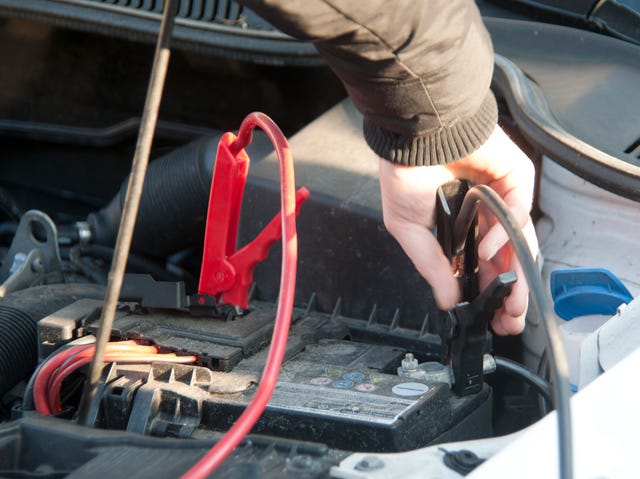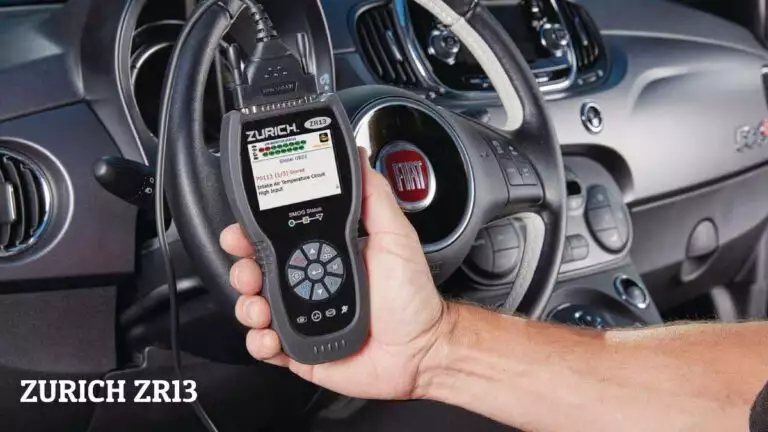How to Charge a Portable Car Battery Charger
To charge a portable car battery charger, plug it into a power source using the provided adapter. Make sure the charger is turned off before connecting it.
Ensuring your portable car battery charger is always charged up and ready to go is essential for peace of mind on the road. Whether you find yourself in need of a jump start or simply want to be prepared for emergencies, having a fully charged battery charger is a must-have accessory for any vehicle owner.
In this guide, we will outline the simple and straightforward steps to safely and effectively charge your portable car battery charger so you can stay powered up and on the move.

Credit: www.autozone.com
Choosing The Right Charger
To successfully charge a portable car battery charger, ensure you select the right charger that matches the battery specifications. Consider factors like voltage, amperage, and compatibility with the battery type. Follow manufacturer instructions for connecting the charger, and monitor the charging process to prevent overcharging.
Consider the Battery Type When it comes to choosing the right charger for your portable car battery, the first thing you need to consider is the type of battery you have. Different battery types have different charging requirements, and using the wrong charger can damage the battery or result in inefficient charging. There are two main types of car batteries: lead-acid batteries and lithium-ion batteries. Lead-acid batteries are the most common, especially in older vehicles, while lithium-ion batteries are becoming more popular in newer electric and hybrid cars. Lead-acid Batteries: These are typically found in traditional gasoline-powered vehicles. They require a charger designed specifically for lead-acid batteries. These chargers utilize a different charging algorithm compared to those used for lithium-ion batteries. Lithium-ion Batteries: These batteries are commonly found in electric and hybrid vehicles. They require a charger that is specifically designed for lithium-ion batteries. Using a charger not suitable for lithium-ion batteries can result in overcharging or even explosion. Check the Charging Capacity The next important factor to consider when choosing a portable car battery charger is the charging capacity. The charging capacity, also known as the amperage or current, is the amount of power the charger can deliver to the battery. Why is charging capacity important? Charging a car battery too slowly can be time-consuming, while charging it too quickly can damage the battery. Therefore, it is crucial to choose a charger with the correct charging capacity for your battery. How to determine the proper charging capacity? To determine the appropriate charging capacity for your battery, you need to know its amp-hour (Ah) rating. The Ah rating indicates how long the battery can provide a certain amount of current. A higher Ah rating means a larger capacity battery that requires a charger with a higher charging capacity. Here’s a table to help you determine the suitable charging capacity based on the amp-hour rating of your battery:| Ah Rating | Recommended Charging Capacity |
|---|---|
| Less than 20Ah | 2-4 amps |
| 20-60Ah | 4-10 amps |
| 60-100Ah | 10-15 amps |
| Above 100Ah | 15 amps or higher |

Credit: www.amazon.com
Preparing The Charger
`Plug in the portable car battery charger properly to effectively jump start a vehicle. Before doing this, it’s crucial to prepare the charger for safe and efficient operation.
Read The Manual And Safety Precautions
`Ensure to read the manual of the charger thoroughly to understand its specifications and proper usage. Adhere to all safety precautions mentioned to prevent any accidents or damage.
Inspect The Charger And Cables
`Check the charger and cables for any visible damages or defects. Make sure all connections are secure and in good condition before proceeding with the charging process.
Charging Process
The charging process for a portable car battery charger involves:
Connecting The Charger To The Battery
1. Connect the red clamp to the positive terminal and the black clamp to the negative terminal of the car battery.
2. Ensure the clamps are securely attached to prevent any disconnection during charging.
Setting The Charging Parameters
1. Check the charger settings for the appropriate voltage and amp levels required for your car battery.
2. Adjust the charging parameters as per the manufacturer’s recommendations to avoid overcharging.
Monitoring The Charging
Learn how to effectively charge a portable car battery charger by monitoring the charging process. Ensure optimal performance and extend the battery’s lifespan with these useful tips.
Check For Indicator Lights
When charging a portable car battery charger, it is important to regularly monitor its progress to ensure efficient and safe operation. One way to do this is by checking for indicator lights. Most portable car battery chargers come equipped with indicator lights that provide valuable information about the charging process.
Before connecting the charger to the battery, carefully read the instruction manual to familiarize yourself with the different indicator lights and their meanings. Typically, these lights will indicate whether the battery is being charged, the level of charge, and if there are any potential issues or errors.
During the charging process, keep a close eye on the indicator lights. If the charger has a light that shows it is actively charging the battery, make sure it remains illuminated. If the light suddenly goes out or starts flashing, it could indicate a problem, such as an improper connection, a faulty battery, or a charging error.
Monitor The Voltage And Amperage
In addition to checking the indicator lights, monitoring the voltage and amperage is crucial for charging a portable car battery charger effectively. Voltage and amperage are key metrics that measure the power and energy flowing into the battery. By keeping track of these values, you can ensure that the charger is working optimally and delivering the necessary charge to your car battery.
To monitor the voltage and amperage, you will need a multimeter. This handy device allows you to measure the electrical potential difference (voltage) and the electrical current (amperage) in the charging circuit. Start by connecting the multimeter probes to the appropriate terminals on the charger or battery, following the instructions provided with the device.
Once the multimeter is connected, it will display the voltage and amperage readings. Take note of these readings and compare them to the specifications provided by the charger manufacturer. A significant deviation from the expected values could indicate an issue with the charger or battery, requiring further investigation or troubleshooting.
Remember to monitor the voltage and amperage regularly, especially during the initial stages of the charging process. This will help you detect any problems early on and take appropriate actions to rectify them.
Safety Measures
When it comes to charging a portable car battery charger, ensuring safety measures is crucial to avoid accidents and injuries. Before charging, it’s important to be aware of the necessary precautions to minimize risks. Here are some key safety measures to consider:
Avoiding Sparks And Flames
To avoid sparks and flames, ensure that the portable car battery charger is turned off before connecting it to the vehicle’s battery. Always connect the positive cable first, followed by the negative cable. By following this sequence, sparks are minimized.
Using Protective Gear
Protective gear, such as safety gloves and goggles, should be worn every time when charging a car battery. This helps to shield against any corrosive material and potential sparks, reducing the risk of injury.

Credit: www.caranddriver.com
Frequently Asked Questions For How To Charge A Portable Car Battery Charger
How Do You Charge A Portable Car Battery Pack?
To charge a portable car battery pack, connect it to a power source using the provided cable and plug. Make sure it is securely connected. Allow it to charge fully before use.
How Long Does It Take To Charge A Car Battery With A Portable Charger?
A portable charger can take 4-24 hours to fully charge a car battery based on its capacity and the battery’s condition.
How Do I Charge My Car Battery Charger?
To charge your car battery charger, follow these steps: 1. Connect the charger’s positive red cable to the battery’s positive terminal. 2. Connect the charger’s negative black cable to the battery’s negative terminal. 3. Plug in the charger to an outlet.
4. Turn on the charger according to the manufacturer’s instructions. 5. Leave the charger connected until the battery is fully charged.
Do Portable Car Battery Chargers Need To Be Plugged In?
Yes, portable car battery chargers need to be plugged in to power source for charging.
How Do You Charge A Portable Car Battery Charger?
To charge a portable car battery charger, connect it to a power source using the provided adapter.
What Is The Best Way To Charge A Dead Car Battery?
The best way to charge a dead car battery is by using a portable car battery charger or jump-starting the vehicle.
Can You Leave A Car Battery Charger On Overnight?
It is not recommended to leave a car battery charger on overnight as it may overcharge the battery.
Conclusion
To conclude, charging a portable car battery charger doesn’t have to be a complicated task. By following the simple steps outlined anyone can ensure their battery charger is ready for use whenever it’s needed. Remember to always refer to the manufacturer’s instructions for specific guidance on charging your particular model.
Keeping your battery charger charged and maintained properly will help extend its lifespan and ensure it’s always ready to provide a reliable power source for your vehicle. Stay proactive and take care of your battery charger so it can take care of you!

